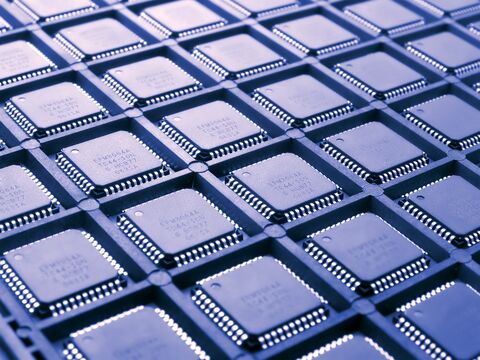Although the microchip development could be appromixated by Moore’s law for decades on end, it seems the theory’s failing is close at hand. A quick refresher: Moore’s law indicated that the number of transistors in an integrated circuit double around every two years. Naturally, such exponential growth is difficult to maintain in the long run, which is why we are likely to experience disruption of this long-established pattern.

As of now, the most intricate microchip contains about 114 billion transistors, with an approximate 5 nanometer size (Mujtaba, 2022). Currently, the two year mark is hardly being met, but with struggles, the doubling of transistors still seems to happen. With the size decreasing to minuscule proportions, producers are ever more challenged by normal physical principals in addition to the regular challenges related to microchip development. Both logic and science suggest, that the end is near. At some point molecular physical boundaries will stand in the way of adding an infinite amount of transistors.
For now however, the industry is challenged by an arguably simpler problem, overheating. In order to keep up with the world’s computing developments, the chips do not only need to have more transistors, but they can only work with a certain degree of heat. Inadequately high temperature causes transistors to lay dormant, counteracting the entire purpose of striving for improved microchips (Harris, 2020).
Why does it matter?
Regardless of what the ultimate cause will be, Moore’s law will lose its standing in the foreseeable future, but what does this entail? From a societal perspective, stagnating improvements of microchips could go by unnoticed or be considered a minor nuisance at most. Technologically and scientifically, the results could be more devastating as an entire field of research will disappear and projected innovations might not be realized in time as the computing power cannot be provided. From a business point of view, the results may be unprecedented. The rigid oligopoly of the microchip industry that has endured for many years might falter, causing big names like Intel and IBM to lose grip of the market, making way for new technological enterprises.
There is many ways in which the story could unfold, and people’s opinions are likely to differ, based on their optimism in humanity’s ability to overcome any obstacle.
What do you think? How will Moore’s law failing, impact different aspects of society?
References:
Harris, N. (2020) Viewpoint: Moore’s law isn’t broken – it’s overheated, retrieved from Viewpoint: Moore’s law isn’t broken – it’s overheated (theengineer.co.uk) on september 12, 2022.
Mujtaba, H. (2022) Apple M1 Ultra Chip Is Nearly 3 Times Bigger Than AMD’s Ryzen CPUs, Benchmarks Show Desktop Intel & AMD CPUs Still Ahead, retrieved from Apple M1 Ultra Chip Is Nearly 3 Times Bigger Than AMD’s Ryzen CPUs, Benchmarks Show Desktop Intel & AMD CPUs Still Ahead (wccftech.com) on september 12, 2022.

A year has past after this post, yet the world hasn’t changed its view: the Moore’s law seems to be failing. One vivid illustration would be the decreasing pace of smartphones development: if 10 years ago Apple could overwhelm its audience with chip performance improvement every year, now it is all about efficiency of use and optimisation rather than chip improvement itself. Same is seen in computers and cars, industrial technologies etc. My personal understanding is as follows: the fact that physical capacity of silicon GPU is reached means that there is going to be a new development path. In my opinion, it is going to be all about quantum computing, optimised cooling and distributed computations. Given the current necessity to care about the global ecosystem, humanity can no longer afford extensive growth methods such as mere multiplication of components fitted within one computational block — it is time for intensification of the digital industry. Therefore, my expectations are to see the uprising of more sophisticated technologies, however, there is still little available apart from 3D layering technique. Anyways, it will be interesting to see what future has for memory!
Interesting links to look at:
https://www.datacenterknowledge.com/design/what-does-end-moores-law-mean-data-center-industry
https://www.oecd-ilibrary.org/sites/63e48242-en/index.html?itemId=/content/component/63e48242-en